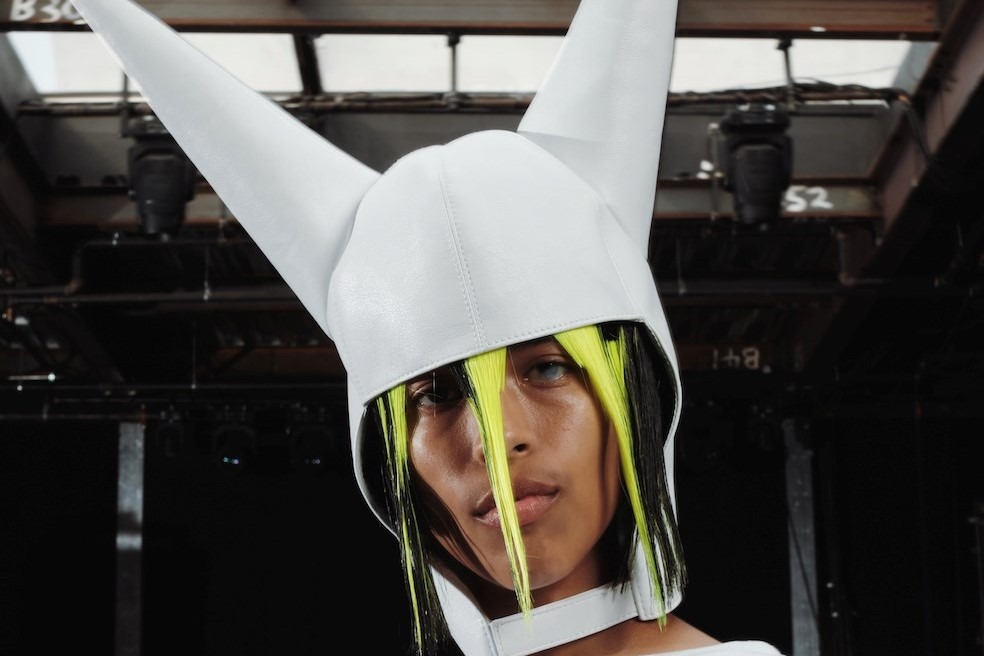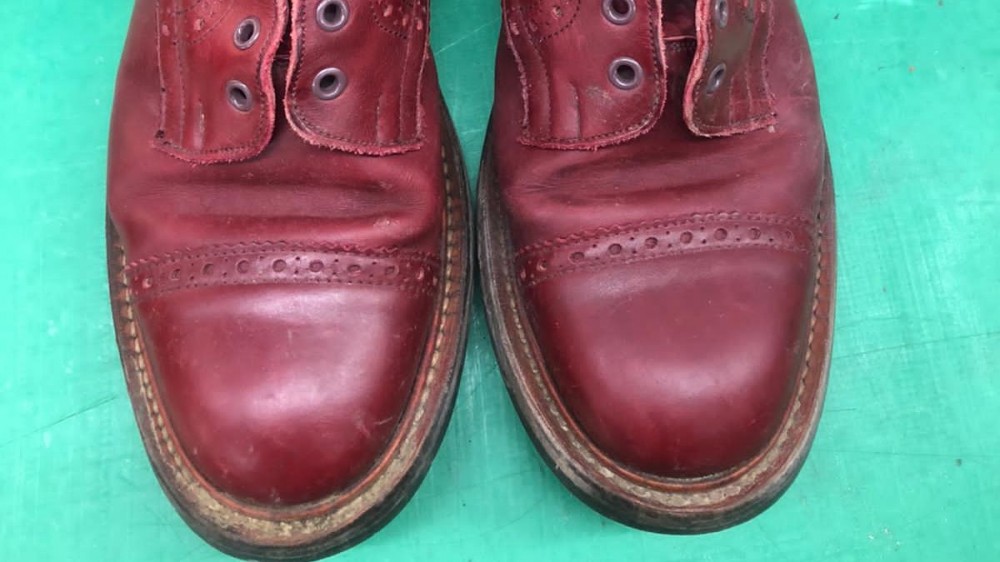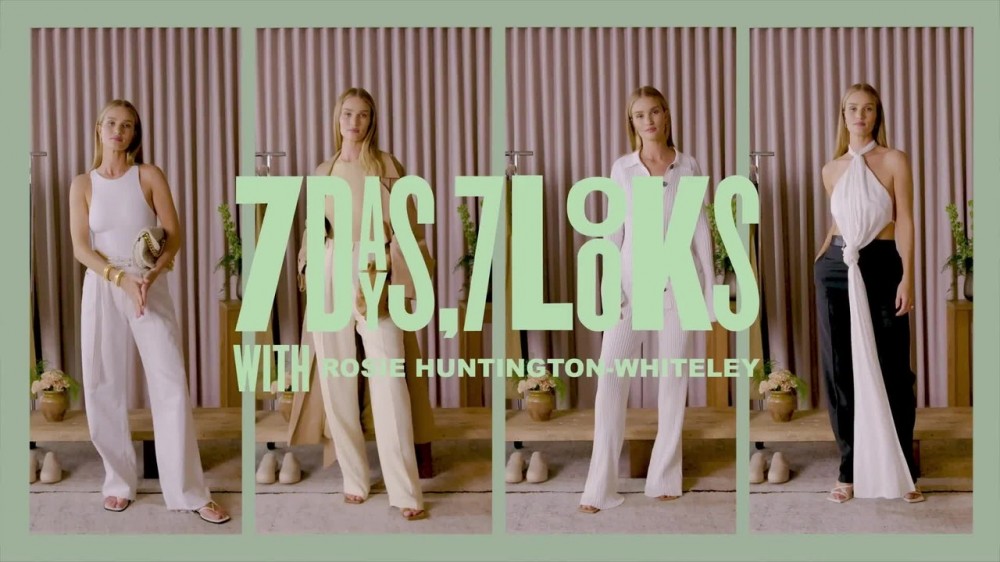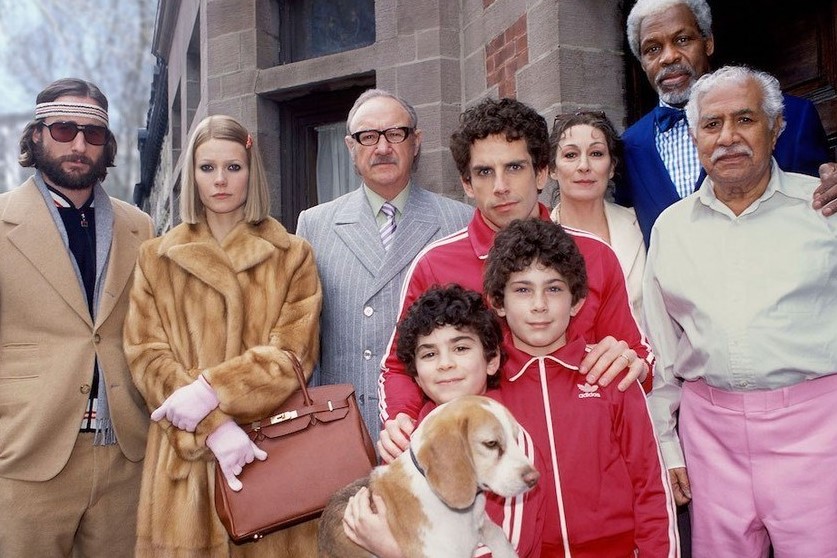
Fashion outlier Shayne Oliver wants his clothes to make you cry
As he debuts his first collection under Anonymous Club, the Hood By Air designer talks through his slippery relationship with the press, queering the fashion system, and horror
Shayne Oliver has been speaking for about ten minutes and still hasn’t answered a question. Just as his train of thought begins to crystallise into something vaguely decipherable, he launches into another non-sequitur, another reference, which takes him down another stream of consciousness. “Do you have air conditioning over there?,” he says, mid-monologue. “I pray for you guys.” He’s barely slept, admittedly, having spent most of the previous night in his studio, but there is a slipperiness to his speech that could easily be read as reluctance. “I don’t think the press has ever taken me particularly seriously as a designer. I don’t draw on traditional references and my work is multifaceted so people tend to think of me as some kind of artist. But I am a designer. I am a creative director.”
Though critics, like the silver-tongued Cathy Horyn, have described Oliver as the only “disruptive” designer to have ever come from New York, fashion has always struggled to get purchase on the chaotic nature of his practice, which straddles music, clothing, porn, art, and performance. But Oliver has actively evaded categorisation, too, banning journalists and photographers from his presentations, wary of explaining the whole thing away. “If I do speak then the work becomes pigeon-holed. I know exactly what I want, but I can’t control how that’s going to be formalised by the outside world,” he says. At one point, the industry ceded, landing on “streetwear” as a catch-all term for the way Hood By Air had upended the fashion system – only in 2017, the brand went on a sudden hiatus, careening too close to the sun.




Those interim years gave way to a slew of big-ticket collaborations, among them Diesel, Colmar, and Helmut Lang, but Oliver’s now made a triumphant comeback on his own terms – not just with HBA, which relaunched in 2020, but with a namesake label, ShayneOliver, and Anonymous Club, which scrambles all of his artistic endeavours into one creative studio, made-up of emerging designers and former HBA collaborators. And last week, at a Boiler Room takeover in Bushwick, Anonymous Club launched its debut collection of clothing, christening the first ever Club Couture: a series of late-night happenings welcoming the public into Oliver’s once-private presentations. “I’m moving into more of a founder’s role here, building a structure so that newgen creatives have a foundation to grow from,” he says, aware of the irony in framing this collective as somehow “anonymous” when he himself is such a recognisable frontman.
“As a person, I feel much more comfortable with being a figurehead than when I was at HBA,” he explains. “It was awkward for me back in the day because I was never comfortable with being considered an institution, but I feel anonymous with this project because I’m just a reference point for the work.” While Oliver oversees the development of a collection, the design process is kept as collaborative as possible. “It’s about shamelessly being able to borrow from my archives without feeling like we’re repeating ourselves, digging out my old toiles and letting the kids have fun with it.” As part of its first offering, that approach emerged in horned helmets, distended knitwear, hunched-over hoodies, warp-sliced denim, and air-brushed t-shirt dresses in slime green, cobalt, and white leather. And though the collection demonstrated sophisticated – and often gruesome – twists on construction, it’s the organisation of Anonymous Club which really challenges what it means to make clothing.
“It’s about being truthful to the beginnings of HBA, which were constantly shifting, starting out as a magazine long before we took clothes to market. That’s what kept artists coming back for more, what deterred them was the fact that it had become a ‘job’.” In time, Anonymous Club will manifest in records, festivals, and exhibitions – “both simultaneously and separately” – errupting like cherry bombs in club kid fashion pageants. “But I’m only listing these examples because it makes the conversation easier,” he says. “They’re just a guide and I eventually want to leave these descriptors alone altogether.” That’s not to say that Oliver will not be returning to the runway with ShayneOliver or HBA – he plans to reinstall himself on the ready-to-wear schedule within a year – rather, it’s an attempt to normalise more amorphous, experimental formats. “The idea is to break down the walls between who is considered the audience and who isn’t. There’s an inherent point of queerness to that.”
He compares these demonstrations, quite unexpectedly, to Ralph Lauren, a world of equestrian-class aspirations. “It’s hard to get into, removed, respected, and those people take their privacy very seriously. That’s what I’d like to do here. Create a space where my people can be safe to meet, like an outside-facing version of the country club.” As Oliver fixes his gaze onto the future of Anonymous Club, I wonder if clothing – as a product, not a concept – now ranks lower in his interests. “No, not at all. I just haven’t been a solo designer quite yet. I see Anonymous Club as sending my kids off to uni so that I can actually one day focus solely on myself. When I get to that level I’ll be more selfish.” So while Oliver might attest to being “the anti-version of things,” he is a fashionphile at heart, in thrall to the industry’s corporate machinations. “I compare how obtuse my work is to Korn (the band) and that era of musicians who were extremely lucrative as outsiders. That’s a smart business decision in itself.”

“I love the fact that everyone is so product-obsessed right now,” he continues. “But, at the same time, ‘quiet’ is not happening. Things are becoming ultra-memed and marketed, which is funny and makes sense, but I don’t know if that necessarily feels chic. I know that sounds pompous to say, but it would be nice to have a dose more romanticism.” That someone who has built a brash and unsettling world of severed heads, child-catcher shoes, and PornHub collaborations should want fashion to speak softly is quite something. And yet the unsavoury has always been a point of reverence for Oliver, stirring deep and morbid fascinations, which are just as worthy of quiet contemplation. “The things that feel absurd are often the most romantic. There’s a sense of humour to horror and that’s an important part of moving the conversation forward, we taunt people when we are scared of them.”
“People don’t know this about me but I am all about emotional clothing. If a garment isn’t bringing me to tears then I’m not interested,” he concludes. Beauty alone is too sacrosanct, too staid to give rise to those feelings, and Oliver himself is only moved when “there has been so much attitude put into the cut of a garment that it changes someone’s behaviour.” The kind of clothing that rearranges you from the inside out, that alters the sensation of being in your own body; “that’s what I consider to be masterful design.” Oliver’s commitment to transform, to shake people into new shapes, has not only galvanised a generation of young artists belonging to Anonymous Club, but it has yielded new ways of being, bringing the creators and the consumers of culture in line with each other. So while fashion might not have the language to host all of his ideas, perhaps Shayne Oliver is best left beyond words.




